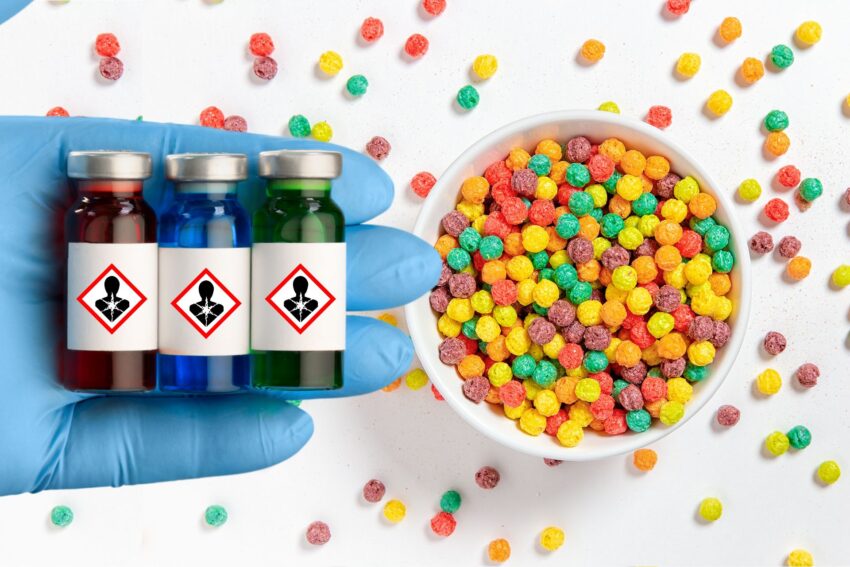In a significant move toward public health, the U.S. Food and Drug Administration (FDA) banned the artificial dye Red 3 from the nation’s food supply in January 2025. This synthetic, petroleum-based dye, also known as erythrosine, has been linked to cancer in laboratory rats, prompting its removal from candies, baked goods, frozen treats, and even cough syrups. The decision, decades in the making since studies in the 1980s first raised red flags, signals a rare victory for consumer advocates. Yet, as the dust settles, a troubling loophole emerges: other artificial dyes are being quietly rebranded with names that sound deceptively natural, slipping past the increasingly savvy eyes of concerned consumers.
Artificial dyes like Red 3 have long been a staple of the ultra-processed food industry. Their purpose is simple but insidious: to make food visually irresistible, especially to young children. Bright reds, electric blues, and vibrant yellows transform bland cereals, snacks, and drinks into eye-catching temptations on supermarket shelves. For kids, whose brains are wired to respond to bold colors, these hues signal excitement and reward, subtly encouraging repeat consumption. Manufacturers know this well—studies have shown that colorful packaging and ingredients boost sales, particularly among younger demographics. Beyond mere attraction, some evidence suggests these dyes may contribute to behavioral issues like hyperactivity and inattention in children, potentially fostering a cycle of craving and consumption that could be considered addiction.
The dangers of these synthetic additives extend beyond behavioral concerns. Red 3’s ban was triggered by its carcinogenic potential in animals, a risk serious enough to invoke the FDA’s Delaney Clause, which mandates the removal of any food additive shown to cause cancer in humans or animals. Other dyes, such as Yellow 5 and Red 40, have been linked to similar neurobehavioral effects in kids, and animal studies hint at broader risks like impaired memory and learning. Despite these red flags, the food industry has found a workaround. Rather than eliminating artificial dyes entirely, some are being renamed to sound less synthetic—think “curcumin” (which can be natural but is often synthesized), “caramel,” or “annatto.” These labels obscure their chemical origins, tricking consumers into believing they’re choosing healthier options when, in reality, the underlying risks remain unchanged.
If the current administration truly aims to “Make America Healthy”—a slogan echoing calls for reform from figures like Robert F. Kennedy Jr., nominated for Health and Human Services Secretary—this Red 3 ban is just a baby step. The U.S. food supply remains awash in a rainbow of questionable dyes and chemical additives, from Blue 1 to Yellow 6, many of which are already restricted or banned in countries like the European Union, Japan, and Australia. To deliver on such a promise, the government would need to overhaul the regulatory framework, targeting not just dyes but the broader ecosystem of preservatives, flavor enhancers, and stabilizers that define ultra-processed foods. These additives, often paired with dyes, prop up a food system that prioritizes shelf life and profit over nutrition, keeping Americans hooked on products that fuel chronic diseases like obesity, diabetes, and heart disease.
Fortunately, alternatives exist. Natural dyes derived from plants—like beetroot for reds, turmeric for yellows, or spirulina for blues and greens—offer vibrant colors without the health baggage. Companies like Kraft have already swapped synthetic dyes for spices like paprika in some products, proving it’s feasible. These options, while sometimes costlier or less stable than their artificial counterparts, align with a growing consumer demand for cleaner labels. However, the shift requires more than industry willingness; it demands a cultural reset. Consumers, especially parents, must rethink their attraction to neon-bright foods. The reality is that the more “bland” a food’s color—think muted browns of whole grains or the earthy tones of unprocessed fruits and vegetables—the closer it likely is to its natural state. Whole foods, free of dyes and heavy processing, deliver nutrients without the hidden risks, offering a stark contrast to the addictive, dye-laden snacks that dominate American diets.
This pivot could ripple through American agriculture. A surge in demand for natural dye sources like beets, turmeric, or berries might boost farmers growing these crops, particularly small-scale operations poised to meet niche markets. Conversely, the industrial agriculture giants churning out corn and soy—key inputs for ultra-processed foods—might face pressure as consumers shift away from dyed, processed products. The transition won’t be seamless; synthetic dyes are cheaper and more consistent, and scaling up natural alternatives could strain supply chains. Still, the long-term payoff—a healthier population and a more sustainable food system—could outweigh the growing pains.
The Red 3 ban is a wake-up call, but it’s not enough. As other dyes get a cosmetic rebrand to dodge scrutiny, the administration’s health ambitions will falter unless it tackles the root of the problem: a food industry built on deception and shortcuts. Consumers, too, must play their part, embracing the muted hues of real food over the artificial allure of the processed aisle. Only then can America move toward a future where “healthy” isn’t just a slogan, but a reality rooted in nature, not chemistry.


